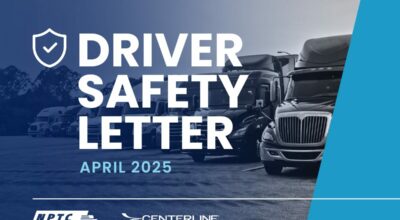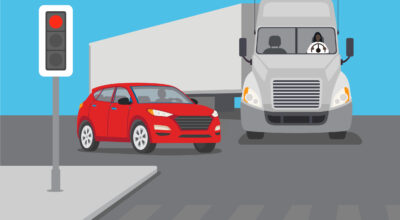
One-quarter of all industrial accidents occur at the loading dock according to Industrial Safety & Hygiene News. If this seems like a lot, here’s another statistic that highlights the huge safety risks associated with being in the area where goods are loaded and unloaded: for every accident that does occur, there are roughly 600 that came close to happening but for whatever reason didn’t.
As a driver in the transportation industry, you’re bound to spend at least some of your time on the loading dock. Here are a few tips that can help you stay safe when in this area.
Be aware of potential hazards
The first step to avoiding a potential hazard is recognizing when one exists. Some of the hazards that can make a loading dock unsafe include surfaces that are wet from rain or other slippery substances, as well as unlevel surfaces. Both of these issues can increase your risk of slipping or tripping.
If you notice a wet spot, clean it up. If there is garbage on the dock, discard it. Report uneven dock surfaces to management and, until they’re fixed, ask that the crack or opening be marked with colored tape to make it more noticeable.
Also be aware of the dock edges so you don’t accidentally fall off. This can easily happen if you aren’t paying attention while taking care of your load.
Look out for other people
A loading dock can get busy when trying to load or unload goods. The more people involved in this process, the greater the likelihood that you’ll run into one another, potentially knocking one of you off the loading dock or pushing you into some of the goods or equipment.
At a minimum, this can lead to cuts and bruises, with more serious injuries being broken bones, concussions, or worse. So, take the time to notice where others are on the loading dock. This helps prevent these types of injuries.
Watch for equipment
People aren’t the only things on loading docks. You’ll also find various pieces of equipment. When on the loading dock, watch for common equipment like forklifts and dollies.
The operators of this type of equipment may not see you due to their vision being obstructed or they might be distracted. Either way, if you’re watching for them, you’re able to move out of the way quickly enough to avoid an incident.
Double-check the dock plates or boards
Dock plates and boards are used to help bridge the gap between the dock and the delivery truck. This makes it possible to move goods easily from one spot to the other.
Before stepping on one of these bridges, make sure it is locked into place. If you have a heavy load, it’s also important to make sure the dock plate or board is strong enough to handle it. This can be ascertained by checking its load capacity.
Practice good truck safety protocol
When loading or unloading, your wheels should be chocked or wedged firmly to keep the rig from moving unexpectedly. Also, shut off your truck when in the loading area to keep everyone safe from carbon monoxide poisoning.
Idling trucks can fill the air with this poisonous gas, leading to flu-like symptoms such as headache, dizziness, and upset stomach. If you take in enough, it may even cause death.
Some docks are equipped with sensors that will go off if carbon monoxide levels get too high. For those that aren’t, pay attention to how you feel and leave the area if you start to feel sick.
Follow safe loading practices
The way you load and unload your truck can also either enhance or reduce your injury risk. If at all possible, use equipment to move heavy items. This keeps you from potentially damaging your body.
But if you must physically move items, lift with your legs versus your back. And wear gloves that grip so the goods don’t slip when handling them.
Additional steps to reduce injury risks
While loading dock hazards can’t be eliminated, there are a few more steps you can take to reduce your risk of injury when in this area. This includes:
- Never running while on a loading dock
- Avoiding rough playing with other employees, which can result in one of you falling off the loading dock
- Wearing nonslip shoes in case you don’t see a slippery area
- Wearing protective gear, such as hard hats and hearing protection, whenever you’re in the loading dock area
More safety tips are available on Centerline’s app. Or, if you’re a driver who is currently looking for work or in search of a new job, we can help with that too.
Contact us today and let us know how we can help you.


